The honor and privilege of working with beautiful young musicians at the Shenandoah Conservatory
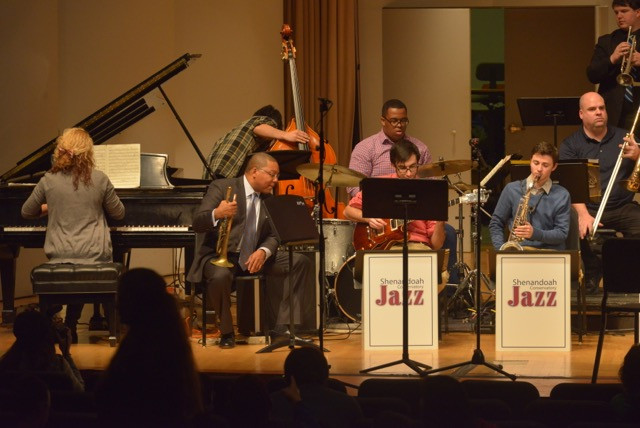
The last 4 days I have had the honor and privilege of working with beautiful young musicians at the Shenandoah Conservatory. In collaboration with the fabulous Washington Performing Arts Society, we rehearsed my Blues Symphony with the Conservatory Orchestra conducted by Jan Wagner. I also held master classes with the National Jazz Workshop All Star Band directed by Alan Baylock and the Shenandoah Conservatory Jazz Ensemble directed by Craig Fraedrich.
Michael Stepniak, Dean of the Conservatory, interviewed me in a public dialogue for the University community and I even visited John Kerr Elementary School to hear and speak with the exceedingly well-behaved 4th grade and their enthusiastic Orff ensemble led by Ryan Stitcher. Having the Shenandoah Music Education Students in attendance added luster and charisma to this event. It was a busy and emotionally rich week and I left having experiences I know will become even more significant as valued memories.
Big Boss Murphy and I are now on 78 East in Pennsylvania on our way back to Manhattan, and the skies are progressing from grey to magenta in anticipation of the snowstorm that is chasing us north. As the radio drones on ridiculously about the New England Patriots deflating footballs, Boss and I comment on the absolute banality of this nonsense and shake our heads.
Here are some of the topics we covered over the last days:
With my 4th graders we talked about listening to yourself AND others at the same time and about keeping your place in the time of the music.
We said you should always look with support at someone who has messed up in the course of a piece and never tease or show your displeasure with them.
They told me that Mr. Stritcher says “make mistakes with confidence.” Then we talked about the power of the word RESPECTFULLY as a way to behave and to listen and to respond to others.
We learned about the importance of drinking water, sleeping and BREATHING especially that first breath in time as a way of focusing a group entrance.
They taught me how to start things: Have a plan, have the right ingredients, have courage, heart and confidence, know what you’re going to do and be alive.
And how to end things:
Pace yourself, happily, with confidence, and most importantly, together. Finally we learned about the importance of being present and the need for consistent energy and enthusiasm when making music and in life.
With the Orchestra and Maestro Wagner we rehearsed for 9 hours over three days and talked about:
- finding your notes (regardless of instrument) in the harmony in order to properly balance chords
- understanding the function of your part in every moment of a piece
- improving your understanding of the overall architecture of a piece with each reading
- playing with rhythmic intensity at all volumes and even more when playing softly
- exaggerating dynamic ranges for drama and contrast
- the importance of sincere dialogue when instruments and groups of instruments have a call and response
- the importance of understanding what notes MEAN and striving to play with meaning and deep purpose above being technically accurate
- keeping audiences involved by playing better and not by saying they aren’t sophisticated enough.
This is some of the music we listened to and discussed:
Orquestra Aragon of Cuba and how to play danzon, how to whoop on a French horn from Coltrane Africa brass, Tito Puente’s Ran Kan Kan and rhythmic intensity, Duke Ellington and the Habanera rhythm, After Hours with Erskine Hawkins’ Orchestra to exemplify playing in the triplet time on the blues, how simple rhythmic units work together to form a groove, Jelly Roll Morton’s Maple Leaf Rag, the characteristics of half steps in blues harmony especially when sounding across octaves, the shuffle rhythm and 6 against 4, the sound of the Afro American church 6/4, the Holy Ghost is in a tambourine, Pixinghinua and Brazilian choro phrasing, American dance band drummers from 1905 to 1920 and the range of affects they commanded, how to choke cymbals and what is a stingy choke, the cascara rhythm and how it’s played, phrasing in the 19th century by stretching the 1st beat at the appropriate times and learning to hear great musicians of all idioms from Mahalia Jackson to Oum Kalthoum to Cachao and understand what makes them great.
With the National Jazz Workshop All Star Band we worked on Concerto for Cootie. I was so happy to see them playing great music. When I was growing up (and I’m sure it’s still prevalent today) high school orchestra’s played Beethoven and Tchaikovsky, the concert band played Vaughan-Williams and Holst, and the Jazz band played whatever the director has written or some jazz-funk or jazz-rock tunes. This band, however, was well-prepared and also very easy to work with. The trumpet soloist, Caeley Niess, was absolutely soulful, creative and a pleasure to work with.
We talked about:
- calling and responding in a vocal manner
- the importance of choosing to play in balance instead of relying on amplifiers and monitors
- playing rhythms with intensity
- knowing who is playing lead in every moment and following them as intently as you solo
- listening closely to the soloist
- grooving and being danceable is the objective of swinging
- Jimmy Hamilton telling me that Duke used to say, “Personalize your parts,” meaning play with feeling and intensity
- the importance of playing solos with freedom and creativity
With the Shenandoah Conservatory Jazz Ensemble we talked about:
- listening to soloists and responding to what they are trying to accomplish with their solo
- the rhythm section and the importance of a big band breaking down to a swinging small band
- knowing how to play on top of or inside of a written background if you are soloing
- the importance of brass listening to reeds
- the central significance of the drums and the need for drummers to know the lineage of great big band drummers
- how to comp
- playing chord changes at the piano when you have to solo on a song
- learning how to hear the internal voices by analyzing Bach chorales and identifying internal harmony notes on progressions
- learning progressions without the music and playing the bass notes as well as the melody
- how to listen to King Oliver’s Creole Jazz Band recordings of 1923 and pick out Louis Armstrong’s part to hear someone inventing an internal harmony part
- the importance of listening to great bands.
Whew! It was an incredible week for me. Everyone was so hospitable and warm. It felt like the South. Thank You to the entire faculty and staff at Shenendoah University and Washington Performing Arts Society, from Dean Stepniak and the irrepressible Murray Horowitz to Karen Walker, the Associate Dean for Graduate Studies and Associate Professor of Piano, and Bob Larson Director of Jazz Studies all the way around to the hard working Shenandoah Conservatory Music Production and Recording Technology students. Yes.
Wynton

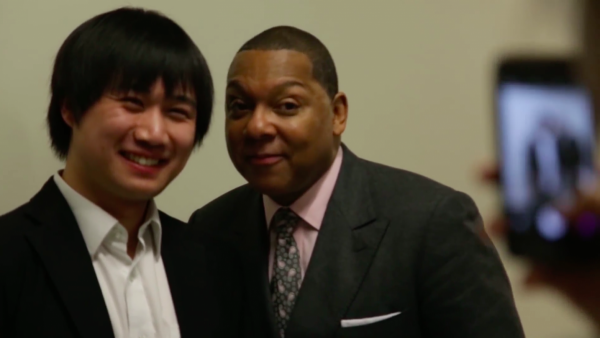
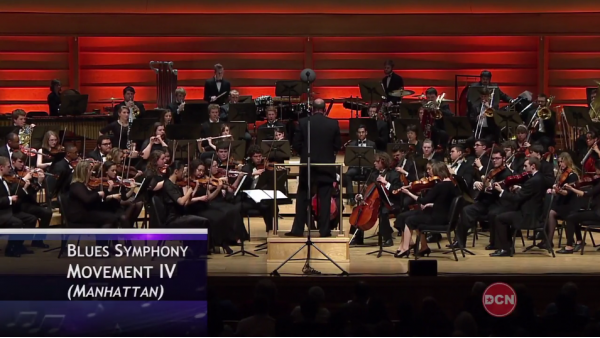

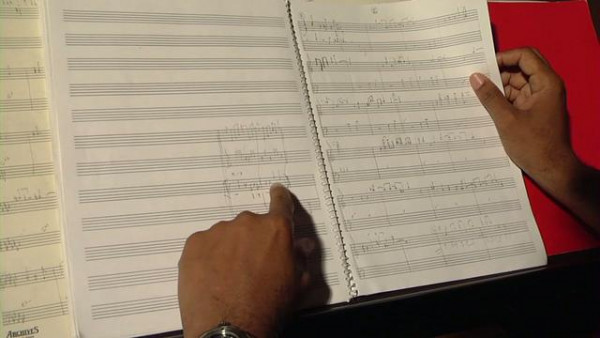
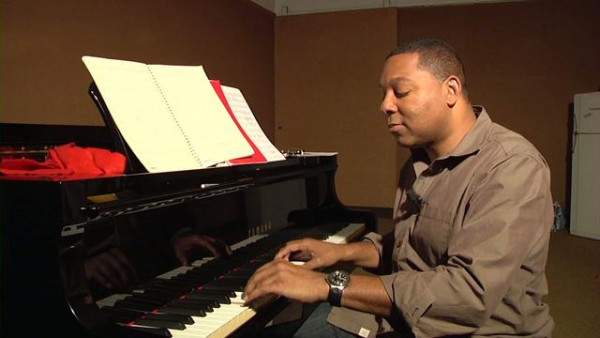
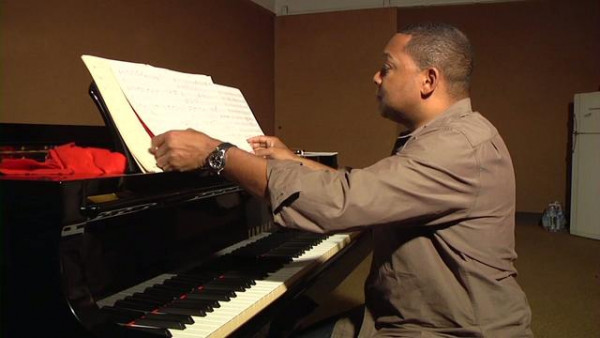
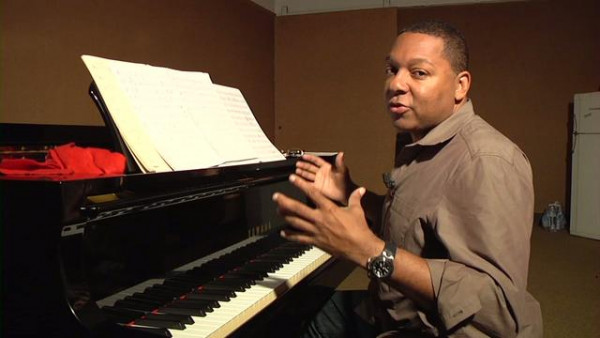
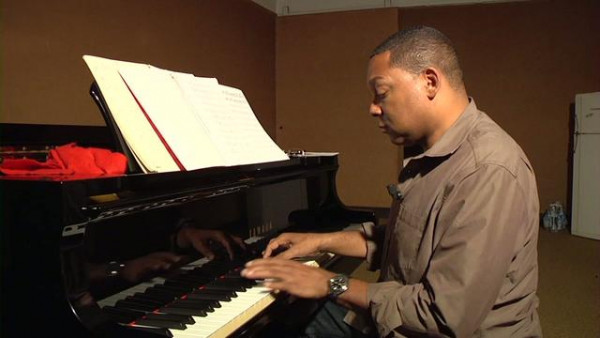
Comments
Hello Wynton,
When you say Jelly Roll Morton’s Maple Leaf Rag under the music you listened to and discussed did you mean to say Scott Joplin? Or were you referring to Morton’s version of the song?
Thank You,
Ben
(P.S. I really love the blogs!)
Benjamin on Feb 2nd, 2015 at 11:25pm